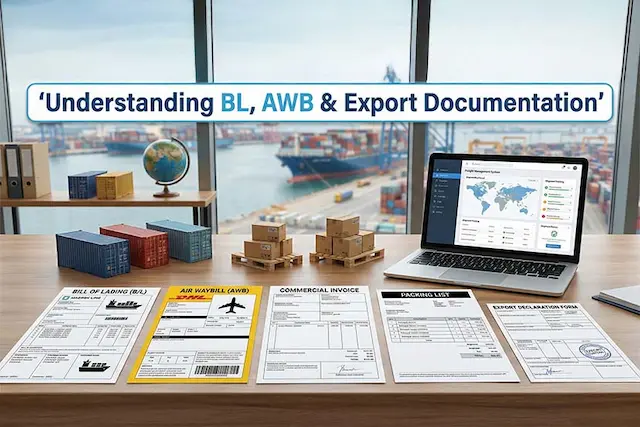The North American Free Trade Agreement (NAFTA) was a pivotal trilateral intergovernmental agreement between the United States, Mexico, and Canada. Established on January 1, 1994, it aimed to eliminate trade barriers and promote economic collaboration among these three countries. This free trade zone revolutionized the movement of goods and services, contributing to significant economic changes. However, in July 2020, NAFTA was replaced by the United States-Mexico-Canada Agreement (USMCA), which aimed to update and enhance the treaty’s provisions for a modern economy.
What is NAFTA?
NAFTA was created to establish a large, tariff-free zone among the US, Mexico, and Canada, allowing for the easy flow of goods, services, and investment across borders. The idea for such a free trade zone first emerged in the 1980s during Ronald Reagan’s presidency, becoming a cornerstone of his campaign. NAFTA was signed under the administration of President George H. W. Bush, Canadian Prime Minister Brian Mulroney, and Mexican President Carlos Salinas de Gortari after intense negotiations.
The goal of NAFTA was straightforward: eliminate tariffs on most goods traded among these nations, create better market access for businesses, and foster economic integration. The agreement replaced the Canada-United States Free Trade Agreement (CUSFTA), expanding it to include Mexico, thus connecting the economies of the continent.
How did NAFTA Work?
NAFTA covered virtually all trade in goods and services across the three countries, excluding sensitive areas such as maritime services, telecommunications, and aviation. It also provided intellectual property rights protections, which were critical for safeguarding trademarks, copyrights, and patents.
In terms of trade, NAFTA allowed US, Mexican, and Canadian businesses to trade freely, provided the goods met specific “rules of origin” requirements. These rules ensured that the goods originated within the three-member countries to qualify for tariff-free trade. This regulation was necessary to prevent non-member countries from exploiting the agreement by sending their products through one of the member countries.
Rules of Origin
To maintain trade integrity, NAFTA had strict rules of origin. Products could be deemed eligible for tariff-free status if they were “wholly obtained” from one of the three member countries. Various provisions further detailed how products made with components from non-member countries could still qualify as originating goods under specific conditions. Key provisions like “accumulation,” “de minimis,” and “fungible items” allowed for some flexibility in determining the origin of goods.
For example, if a US bicycle manufacturer sourced certain parts from Mexico, these parts would count as originating goods. Even if small parts came from non-member countries, as long as they accounted for less than 10% of the total value (under the de minimis rule), the finished product could still qualify for NAFTA benefits.
NAFTA Certificate of Origin
To claim preferential treatment under NAFTA, exporters needed to submit a NAFTA Certificate of Origin, confirming that their products met the required rules. If a shipment was valued under $1,000, a simple declaration on the trade invoice was sufficient. Documentation for higher-value goods was more stringent, requiring records to be kept for several years after exportation, particularly when shipping to Canada or Mexico.
The Purpose of NAFTA
The primary purpose of NAFTA was to enhance economic cooperation between the three largest economies in North America. By eliminating tariffs and non-tariff barriers, NAFTA aimed to boost trade and investment, create jobs, and promote economic growth. The agreement allowed businesses in each country to access larger markets, leading to increased productivity and competitiveness on a global scale. It also sought to balance the disparities between the highly developed US and Canada and the developing Mexican economy, fostering economic development across the continent.
Key Features of NAFTA
NAFTA had several key features that defined its operation and impact on the member nations:
- Reduction of Trade Barriers: One of NAFTA’s most significant achievements was the reduction and eventual elimination of tariffs on nearly all goods and services traded among the three countries. By reducing trade barriers, NAFTA promoted more efficient trade flows, particularly benefiting Mexico, where significant reforms had already been underway prior to the agreement.
- North American Production: NAFTA required that a certain percentage of goods must originate within North America to qualify for tariff-free treatment. This encouraged production within the region, boosting industrial and manufacturing sectors in all three countries.
- Intellectual Property Protections: NAFTA strengthened intellectual property rights protections, particularly in Mexico, ensuring that businesses and individuals in the member countries were safeguarded against unauthorized use of their innovations.
- Investment Opportunities: The agreement encouraged foreign direct investment (FDI) by reducing restrictions on investment. This led to greater cross-border investments, particularly in industries such as energy, communications, and real estate.
- Supplemental Agreements: Two supplemental agreements, the North American Agreement on Labor Cooperation (NAALC) and the North American Agreement on Environmental Cooperation (NAAEC), were signed to address concerns about labor standards and environmental degradation, particularly in Mexico.
Benefits of NAFTA
The benefits of NAFTA were numerous and far-reaching:
- Increased Trade: NAFTA led to a significant increase in trade between the US, Canada, and Mexico. Trilateral trade increased by over 300% between 1994 and 2017.
- Economic Growth: By lowering trade barriers, NAFTA contributed to economic growth in all three countries. The agreement added approximately $80 billion to the US economy alone.
- Job Creation: NAFTA helped create millions of jobs across the three countries. The agreement was particularly beneficial for the US, where nearly 17.7 million jobs were supported by trade with NAFTA partners in 2008.
- Foreign Direct Investment: NAFTA led to a surge in foreign direct investment, particularly in Mexico, where US investments rose from $15.2 billion in 1993 to $104.4 billion by 2012.
- Lower Consumer Costs: By eliminating tariffs, NAFTA reduced the cost of imports, leading to lower prices for consumer goods, particularly for products like oil and gas from Mexico.
Challenges and Drawbacks
Despite its benefits, NAFTA was not without its drawbacks:
- Job Losses: While NAFTA created jobs, certain sectors like manufacturing in the US saw significant job losses as companies shifted production to Mexico, where labor costs were lower.
- Wage Suppression: US companies threatened to move operations to Mexico, which put downward pressure on wages and undermined labor unions.
- Environmental Concerns: Mexico faced significant environmental challenges as industries expanded, leading to increased pollution and deforestation.
- Exploitation of Mexican Workers: Low wages and poor working conditions in Mexican factories, particularly in border areas known as maquiladoras, were a significant issue.
The Transition to USMCA
In July 2020, NAFTA was replaced by the USMCA, a modernized agreement that addressed many of the concerns raised about NAFTA. USMCA updated provisions related to digital trade, intellectual property, and labor rights while keeping the core goal of enhancing trade among the three nations.
Conclusion
NAFTA played a critical role in transforming trade relationships between the United States, Mexico, and Canada by removing barriers, boosting economic growth, and fostering stronger cross-border ties. While the agreement brought numerous benefits such as increased trade and job creation, it also faced challenges like wage suppression and job losses in some sectors. Its replacement, the USMCA, aimed to address these issues with modern provisions for digital trade, labor rights, and environmental protections. Overall, NAFTA laid the groundwork for economic integration in North America, with lasting effects on regional trade dynamics.
Also Read: Technology Trends in Export Financing: Shaping the Future of Global Trade




